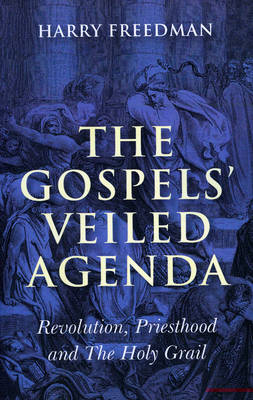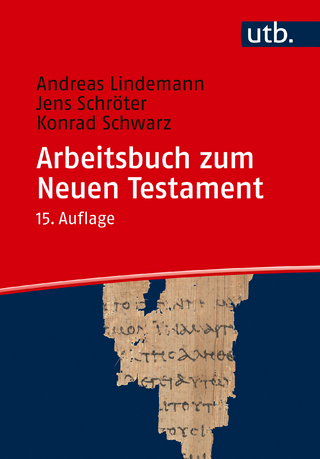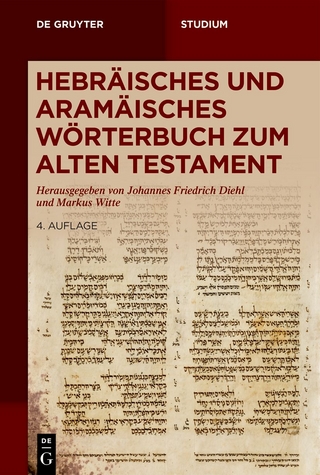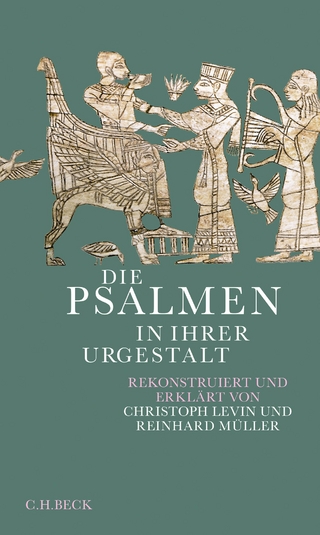
Gospels` Veiled Agenda, The – Revolution, Priesthood and The Holy Grail
Seiten
2009
O Books (Verlag)
978-1-84694-260-0 (ISBN)
O Books (Verlag)
978-1-84694-260-0 (ISBN)
Approaching the New Testament from a midrashic perspective leads to a radically new picture of Jesus as a political leader.
The gospel writers were masters of 'Midrash', a popular literary technique in the ancient Jewish world. Midrash enables authors to promote their ideas by weaving them into well known biblical themes. The gospels contain coded, midrashic, messages that would have resonated with their contemporary Jewish audience. Approaching the "New Testament" from a midrashic perspective leads to a radically new picture of Jesus as a political leader. Not, as is often claimed a revolutionary against Roman occupation. One prominent theme, that of the Holy Grail, which is central to an understanding of the revolutionary agenda, was virtually (but not quite) written out the gospels, only to resurface in medieval Christian folk lore. The failure of Jesus' revolution came about, not with his crucifixion, but long before with the imprisonment and subsequent execution of John the Baptist, the only qualifying candidate for high office in the revolutionary scheme. From this time forward Jesus and his disciples faced an uphill struggle. Their ultimate demise was inevitable, and Jesus knew this, as the narrative bears out.
The gospel writers were masters of 'Midrash', a popular literary technique in the ancient Jewish world. Midrash enables authors to promote their ideas by weaving them into well known biblical themes. The gospels contain coded, midrashic, messages that would have resonated with their contemporary Jewish audience. Approaching the "New Testament" from a midrashic perspective leads to a radically new picture of Jesus as a political leader. Not, as is often claimed a revolutionary against Roman occupation. One prominent theme, that of the Holy Grail, which is central to an understanding of the revolutionary agenda, was virtually (but not quite) written out the gospels, only to resurface in medieval Christian folk lore. The failure of Jesus' revolution came about, not with his crucifixion, but long before with the imprisonment and subsequent execution of John the Baptist, the only qualifying candidate for high office in the revolutionary scheme. From this time forward Jesus and his disciples faced an uphill struggle. Their ultimate demise was inevitable, and Jesus knew this, as the narrative bears out.
Academic and entrepreneur, Harry Freedman has promoted a critical view of Judaism's development. He now uses his knowledge of ancient Jewish texts to challenge the Church's view of Jesus's true ambitions.
| Erscheint lt. Verlag | 31.12.2009 |
|---|---|
| Sprache | englisch |
| Maße | 143 x 226 mm |
| Gewicht | 290 g |
| Themenwelt | Religion / Theologie ► Christentum ► Bibelausgaben / Bibelkommentare |
| Religion / Theologie ► Christentum ► Kirchengeschichte | |
| Geisteswissenschaften ► Religion / Theologie ► Judentum | |
| ISBN-10 | 1-84694-260-8 / 1846942608 |
| ISBN-13 | 978-1-84694-260-0 / 9781846942600 |
| Zustand | Neuware |
| Informationen gemäß Produktsicherheitsverordnung (GPSR) | |
| Haben Sie eine Frage zum Produkt? |
Mehr entdecken
aus dem Bereich
aus dem Bereich
Buch | Softcover (2021)
De Gruyter (Verlag)
29,95 €


